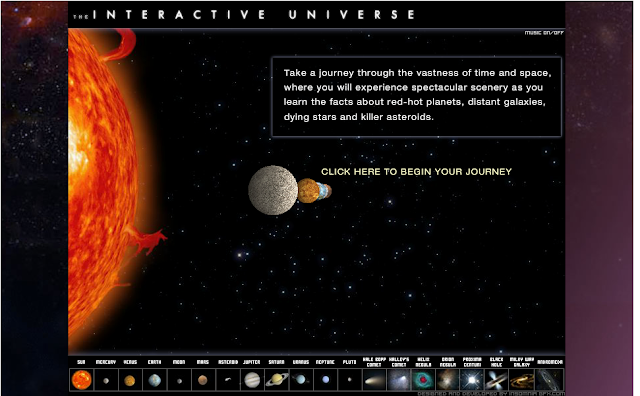Some celestial bodies that make up the Universe give off heat and light; others do not.
- Self-luminous celestial bodies give off heat and light that they produce themselves. These are called STARS.
- Nonluminous celestial bodies do not produce light. They reflect light from the Sun or from other stars. PLANETS, SATELLITES and COMETS are nonluminous.
The Earth is the third planet in the Solar System. It moves around the Sun and it has a satellite, the Moon.
Its shape is spherical, but slightly flattened at the poles.
An imaginary circle called the equator divides the Earth into two halves at its widest part:
- The upper half is the NORTHERN HEMISPHERE.
- The lower half is the SOUTHERN HEMISPHERE.
The Earth rotates on an imaginary axis that goes from the North Pole at the top to the South Pole at the bottom.
Now click the following image to take a journey through time and space. Read about the planets, stars and other celestial bodies in the Universe. Look at the different pictures and discover new facts!



No comments:
Post a Comment